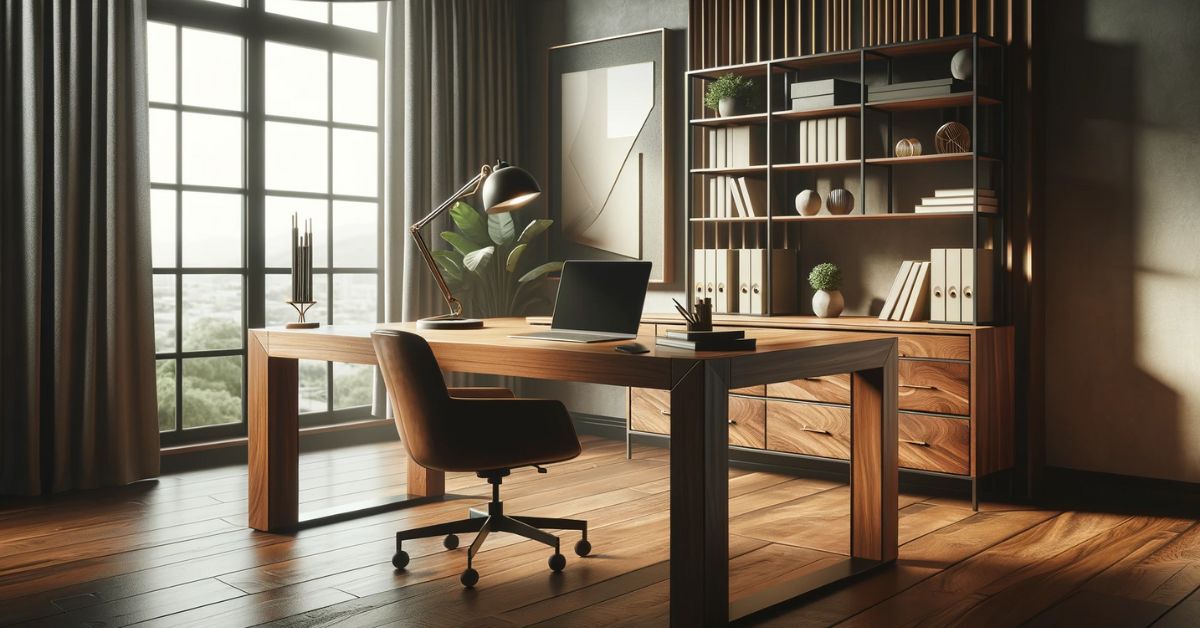This post contains affiliate links.
In today’s world, where working from home has become more common, the desk is key to a productive and comfortable home office. Choosing the right desk is more important than ever, and you’re in the perfect spot to learn how to do just that.
The ideal amount to spend on a home office desk typically ranges from $50 to over $2000 based on individual needs and budget. The cost is influenced by the quality of the materials, the size of the desk, how comfortable it is to use (ergonomics), and any extra features it might have.
This guide is designed to help you understand these factors and make a choice that not only suits your budget but also enhances your work-from-home experience. Keep reading to learn how to find a home office desk that’s a good value for the money you spend.
How Much to Spend on a Home Office Desk?
Deciding how much to spend on a home office desk involves balancing your needs and what you value. It’s not just about finding a price tag that fits your budget; it’s about understanding what a desk means to you and your work.
Before you make a purchase, consider the primary function of your desk. Will it be used for daily work tasks, occasional bill paying, or creative projects? The desk’s purpose will significantly influence its size, style, and necessary features.
For example, if you’re a graphic designer, you’ll need a large desk to spread out your drawings and a surface that can resist scratches and stains. A simple desk might do the trick if you’re a consultant who works mostly on a laptop. The desk’s function will also determine the need for drawers, shelves, or additional space for multiple monitors.
To help guide your decision, here’s a table outlining various desk types, their price ranges, and key features:
| Desk Type | Price Range | Key Features |
|---|---|---|
| Basic Writing Desk | $50 – $200 | Simple, limited storage, particleboard/MDF |
| Standard Office Desk | $200 – $500 | Solid wood, more storage |
| Computer Desk | $150 – $600 | Shelving, keyboard trays, larger area |
| Executive Desk | $500 – $2000+ | High-quality, elegant, ample storage |
| Standing Desk | $300 – $1500 | Adjustable height, ergonomic |
| L-Shaped Desk | $250 – $1000 | Spacious, fits corners, extra storage |
| U-Shaped Desk | $700 – $2500+ | Large surface, includes hutches/storage |
| Custom/Designer Desk | $1000 – $5000+ | Unique design, premium materials |
Remember, the prices can vary based on brand, materials, features, and where the desk is purchased.
What Factors Affect the Price of Home Office Desk?
When it comes to purchasing a home office desk, several key factors play a crucial role in determining its price. Understanding these elements can help you make a more informed decision that aligns with both your needs and your budget.
1. Material Quality
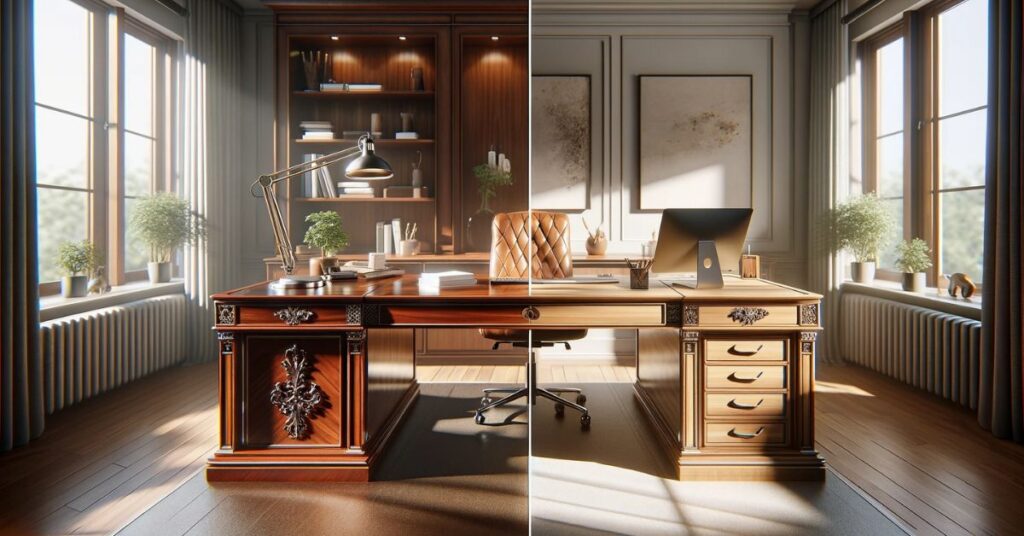
The materials used to make a desk greatly affect its cost and durability. Common materials include wood, metal, glass, and composite materials like MDF (Medium Density Fiberboard) or particleboard.
Desks made from solid woods like oak or walnut tend to be more expensive than those made from manufactured materials like MDF or particleboard.
The durability, aesthetic appeal, and longevity of solid wood contribute to its higher cost. In contrast, manufactured materials are more affordable but may not last as long.
2. Design and Craftsmanship
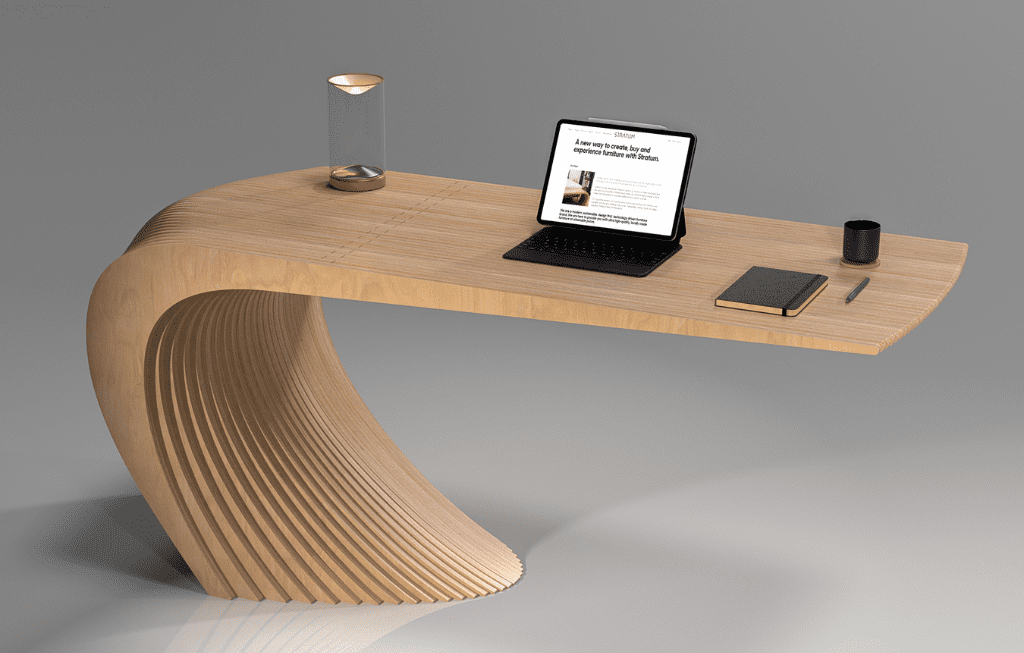
The style of your desk should reflect your personal taste and complement the rest of your home’s decor. While aesthetics are important, they should not come at the expense of functionality or ergonomics.
Custom-designed desks or those with unique features like built-in cable management or adjustable components often come with a higher price tag.
The complexity of design and the labor involved in crafting unique features or custom designs add to the cost.
3. Brand and Market Position
Desks from well-known brands or designer labels can be significantly more expensive than those from lesser-known manufacturers. Brand reputation, marketing, and the perceived value of a designer label often contribute to a higher price.
While brand-name desks may offer prestige and assurance of quality, many lesser-known brands provide similar quality at a more affordable price.
The brand of a home office desk can sometimes be a sign of quality, but it’s not a guarantee.
4. Features
Desks with additional features like height adjustability, ergonomic design, cable management systems or built-in storage solutions can cost more.
These features enhance the usability and comfort of the desk, justifying the additional expense.
5. Size of the Desk
The ideal desk size depends on the tasks you perform. For instance, someone who works with multiple monitors needs a larger desk than someone who uses a laptop.
Larger desks that offer more surface area or storage capacity generally cost more than smaller, more compact models.
The amount of material used and the space it occupies play a role in determining the price. For small home office spaces, a compact yet functional desk might offer a better balance of utility and cost.
What Should You Look For in a Home Office Desk?
Desk is where you’ll spend significant hours working, creating, and thinking, so selecting the right desk is crucial. Here’s what you should consider to find the perfect desk for your home office:
1. Ergonomics and Comfort
Studies show that desks with ergonomic features can reduce the risk of discomfort and injury, thereby increasing productivity.
A desk at the right height, with ample legroom and space for movement, can prevent strain and fatigue. Consider desks with adjustable height for versatility.
2. Size and Space
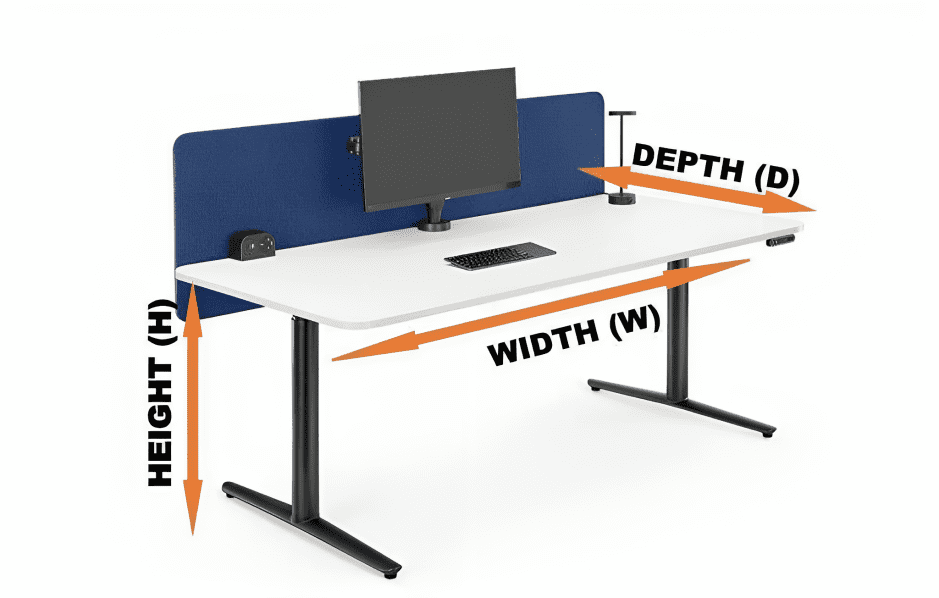
The average home office desk ranges from 48 to 72 inches wide and 24 to 36 inches deep.
The size of your desk should correspond to your available space and the nature of your work. A larger desk is needed for multiple monitors, while a compact desk suits laptop users.
3. Storage and Organization
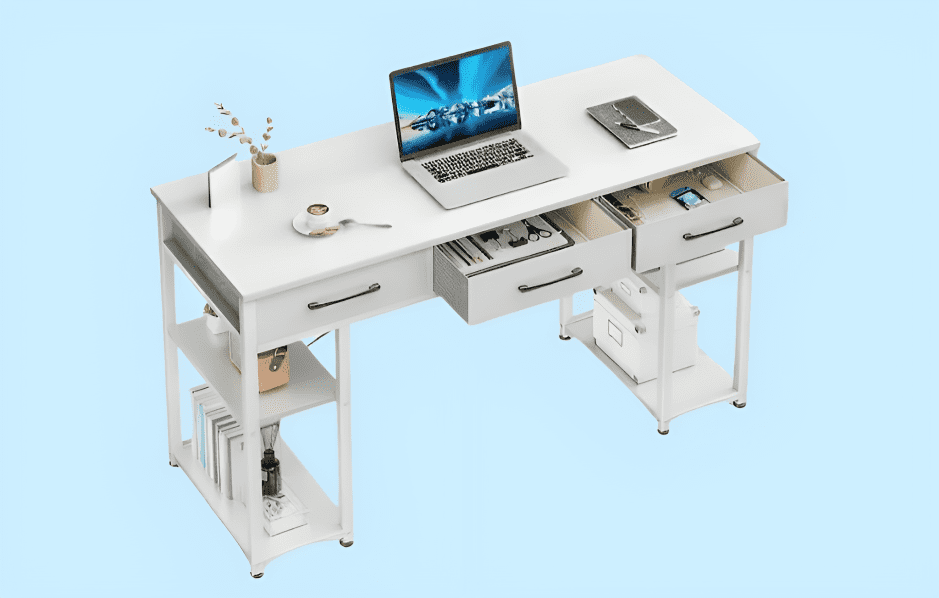
Desks with cable management system and built-in storage like drawers and shelves can help keep your workspace organized and clutter-free.
Adequate storage is essential for easy access to work materials, leading to a more efficient and organized work environment. While more storage is generally beneficial, too much can make a desk bulky. Balance is key.
4. Material and Durability
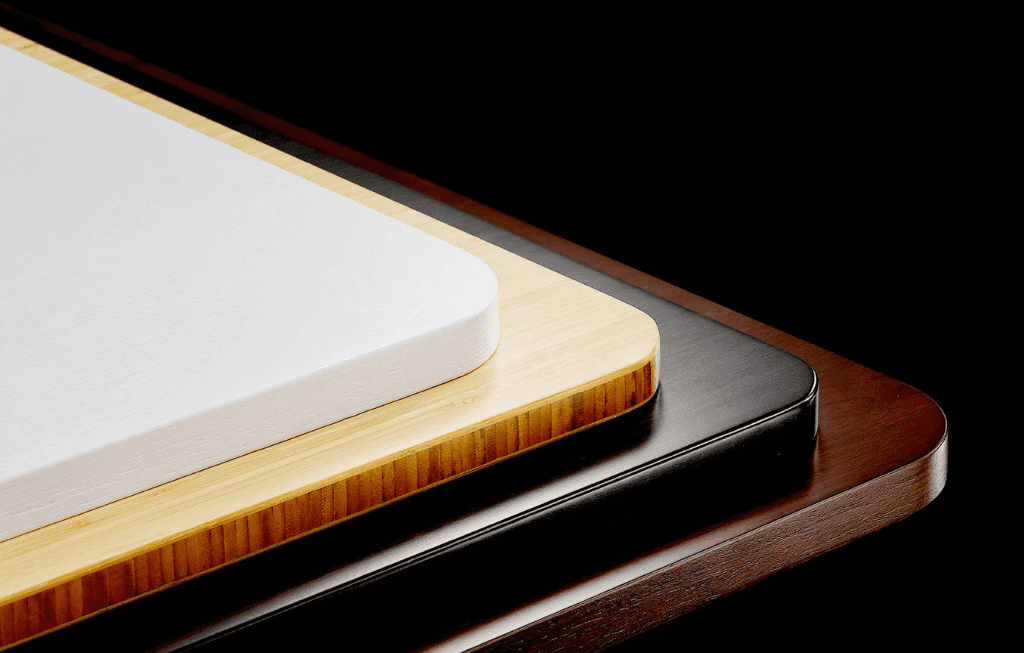
Desks are commonly made from materials like wood, metal, glass, and MDF.
The material affects the desk’s durability, appearance, and price. Solid wood desks are durable and stylish but can be expensive, while metal and glass offer a modern look and are generally more affordable.
5. Style and Aesthetics
The design of your desk can influence your mood and productivity. A study found that a well-designed workspace can increase productivity by up to 20%.
The style of the desk should reflect your personal taste and complement your home’s decor. Whether it’s a traditional wooden desk or a modern minimalist design, choose a style that inspires you.
6. Budget and Value
Desk prices can range from under $100 to several thousand dollars.
Determine your budget beforehand, but also consider the desk’s value in terms of durability and functionality. Sometimes, spending a bit more can be a worthwhile investment in the long run.
A higher price doesn’t always mean better quality. Research and compare options within your budget.
How Do You Measure Your Space for a Desk?
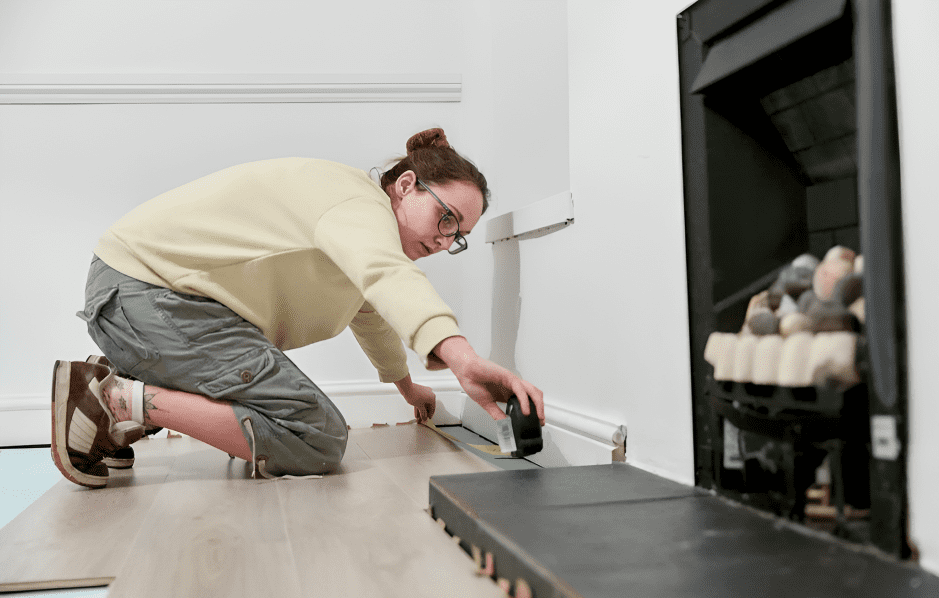
Measuring your space for a desk is a critical step in ensuring your new workspace fits perfectly and serves its purpose efficiently. Here’s a guide on how to do it right:
- Start by measuring the length and width of your room.
- Allow for at least 3 to 4 feet of space around the desk for easy movement.
- Consider desk placement in relation to windows and doorways.
- Measure the ceiling height especially if you have any low-hanging fixtures like chandeliers.
- If you don’t have enough space, consider home office desk alternatives.
How Can You Customize a Desk for Your Specific Needs?
Customizing your desk online is a convenient, budget-friendly way to tailor your workspace to your needs and style. You can choose materials, layouts, and functional features on various platforms, enhancing both your workspace’s look and its utility.
1. Consider Your Needs

When customizing a desk, assess your needs by considering its primary use, available space, required storage, essential features like adjustable height or cable management, and set a budget to ensure functionality and comfort within your means.
2. Choose The Right Platform
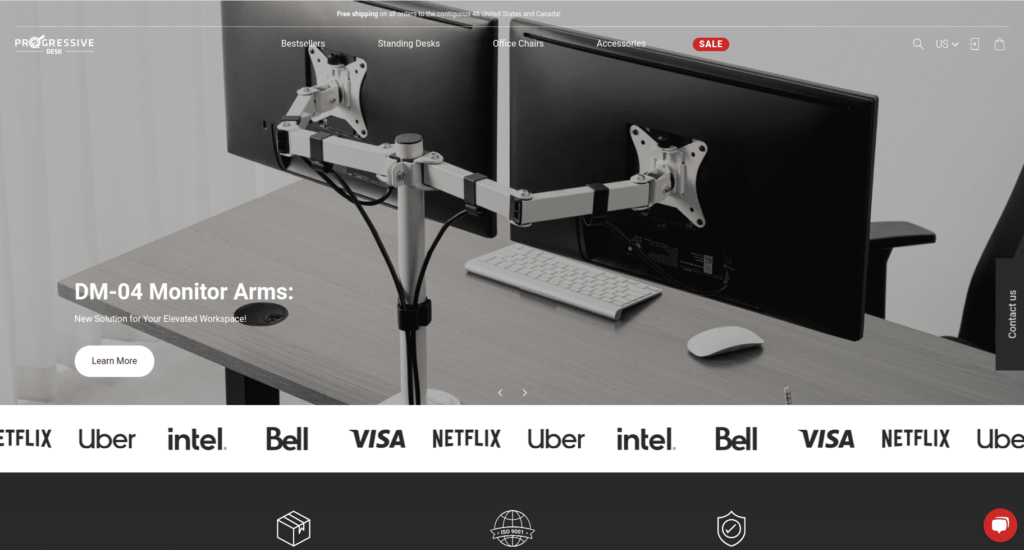
Platforms like Progressive Desk, UPLIFT Desk, Autonomous, and VARIDESK, each offers a range of shapes, materials, and features to suit various needs and budgets, with extensive customization options.
3. Select the Perfect Desktop
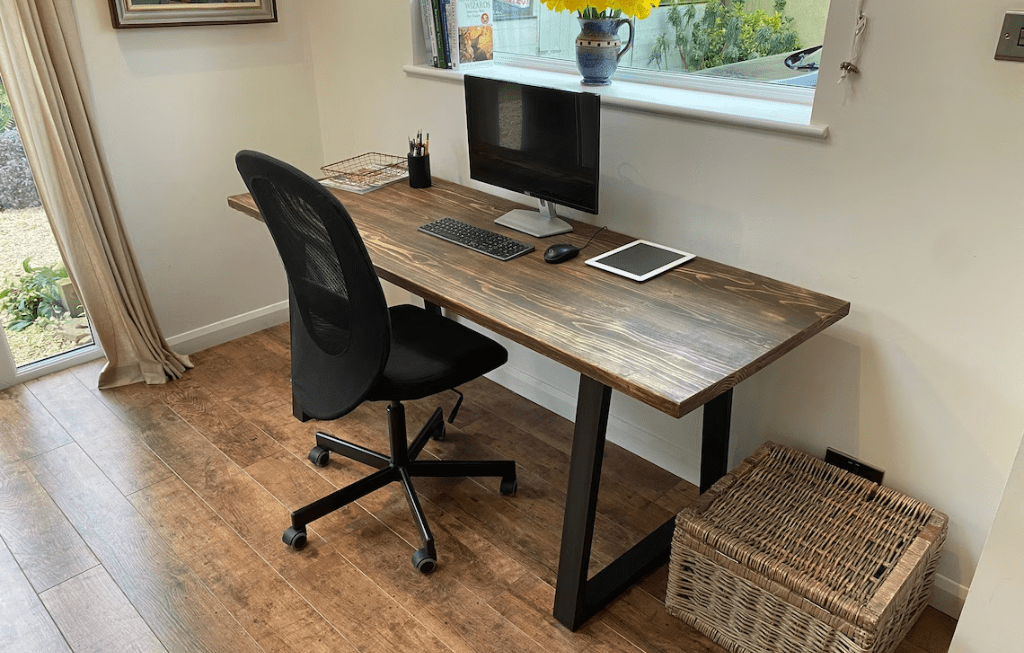
Choose the right desktop material like wood, glass, or metal for durability and style, and consider size and shape for your space and needs.
Wood offers sturdiness, glass a sleek look, and metal an industrial feel, while size and shape determine functionality.
4. Pick The Right Support
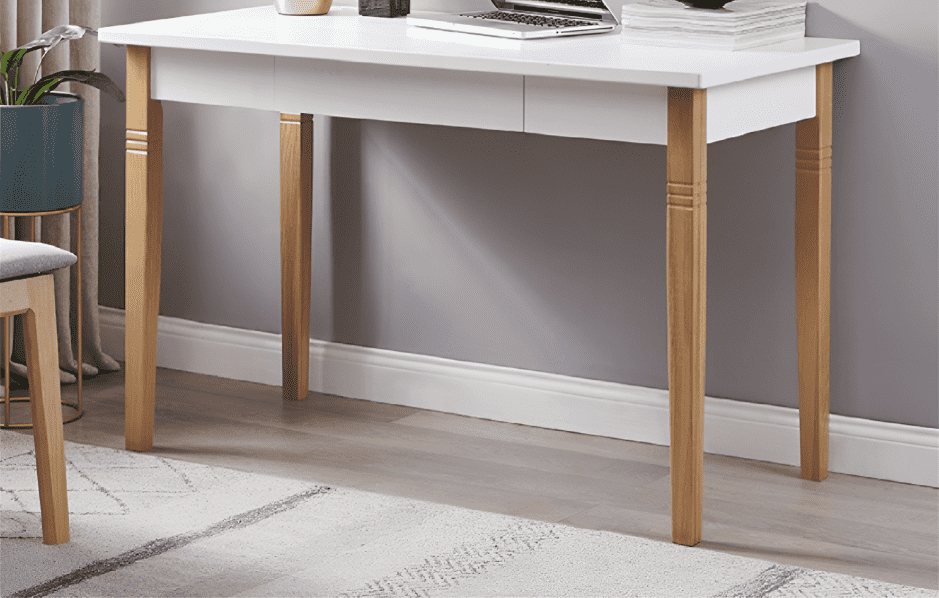
Select the right desk legs for stability and style; standard straight legs offer a classic look and durability, while T-legs provide excellent support, especially for adjustable desks.
Ensure they can support the weight of your equipment for a stable, functional workspace.
5. Add Personal Touches
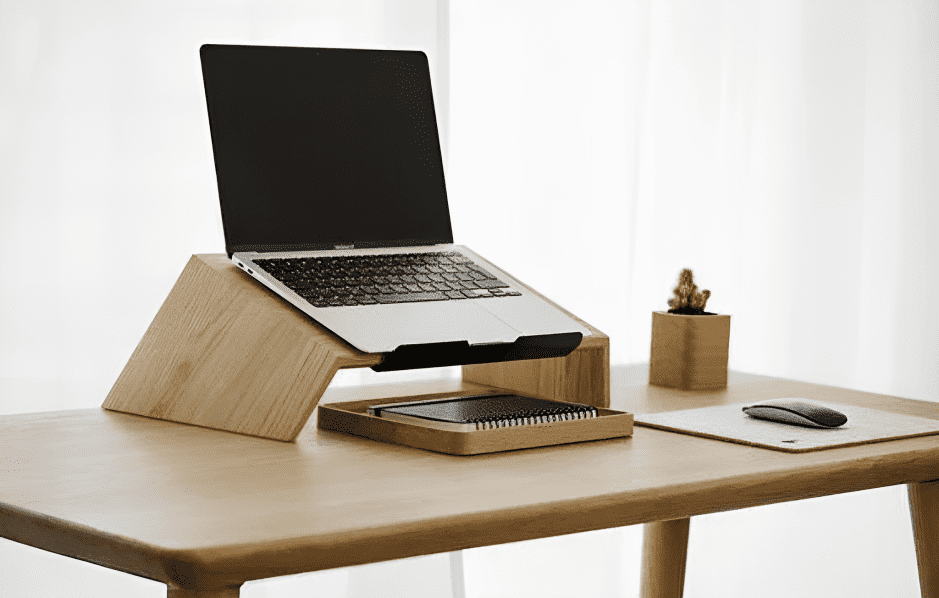
Consider monitor stands, ergonomic keyboard trays, or cable management solutions to keep your workspace organized and comfortable.
Before You Go…
A well-chosen desk is an investment in your work and well-being. The amount you should spend on a home office desk depends on your specific needs and budget.
If you are especially considering a standing desk for your home office, don’t miss my previous article. It also includes the detail on who should and who should not use standing desk, providing crucial insights that could save you from an unnecessary expenditure.

